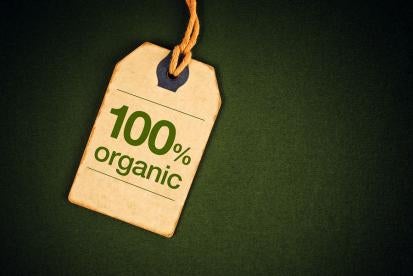The new USPTO patent eligibility examples include two examples for “natural products” based inventions which appear to be consistent with the examples provided in the December 2014 set of patent eligibility examples. Although the new examples include additional discussion and guidance that could be helpful in some cases, they largely remain perplexing. Unfortunately, although the new diagnostic methods examples appear to take a stand against unreasonable court decisions, the new natural products examples continue to rely on Funk Brothers for a guiding principle.
Natural Products Examples
The new examples add Examples 28-33 to the USPTO’s body of patent eligibility examples, of which Examples 28 and 30 relate to natural products.
Example 28 relates to vaccines. Out of the seven sample claims, six are said to be “eligible” and one is said to be “ineligible.” Themes that emerge from this example include:
-
structurally-altered variants of natural products satisfy § 101; no “significantly more” analysis is required {Claim 1, Claim 2}
-
compositions comprising a natural product (or a fragment of a natural product, such as a peptide antigen) and other components that are structurally-altered as compared to their naturally-occurring counterparts (e.g., a cream, emulsion, gel, liposome, nanoparticle, or ointment carrier) satisfy § 101; no “significantly more” analysis is required, but it could be important that the other components impact properties of the composition as a whole in a relevant way {Claim 4}
-
compositions comprising a natural product (or a fragment of a natural product) and another component that impacts the function of the natural product (e.g., an effective amount of an adjuvant) satisfy § 101; no “significantly more” analysis is required {Claim 5, Claim 6}
-
compositions comprising a natural product (or a fragment of a natural product”) and other components (e.g., a pharmaceutically acceptable carrier) do not satisfy § 101 if the components do not impart a different structure or function to each other, unless the claims can survive a “significantly more” analysis {Claim 3}
-
devices (e.g., microneedles) comprising a natural product (or a fragment of a natural product”) do not satisfy § 101 unless the use of the device with the natural product was not well-understood, routine or conventional (e.g., unless the claims can survive a “significantly more” analysis) {Claim 7}
Example 30 relates to nature-based sweetener compositions. Out of the six sample claims, four are said to be “eligible” and two are said to be “ineligible.” Themes that emerge from this example include:
-
compositions comprising specified amounts (or ranges of amounts) of a natural product (e.g., a small molecule) and a carrier (e.g., water) do not satisfy § 101 where it was well-understood, routine and conventional to use that type of carrier with that type of product and to vary the relative amounts of each (e.g., where the claims do not survive a “significantly more” analysis) {Claim 2 }
-
compositions comprising a natural product and other naturally-occurring components satisfy § 101 if the combination as a whole has properties that are different in a way that is “relevant to the nature of the invention” (e.g., organoleptic properties or flavor profile); no “significantly more” analysis is required {Claim 3, Claim 4}
-
compositions comprising a natural product having specific physical characteristics (e.g., a specific particle size distribution) satisfy § 101 if the physical characteristic is associated with a different property that is “relevant to the nature of the invention”; no “significantly more” analysis is required {Claim 5 }
-
compositions comprising a natural product in a controlled release formulation satisfy § 101 if the controlled release is “relevant to the nature of the invention”; no “significantly more” analysis is required {Claim 6 }
Markedly Different Versus Significantly More
When reviewing these examples, it is important to keep in mind that the USPTO has mapped the two-part Mayo/Alice analysis onto Step 2a and Step 2b of its analytical framework. Thus, the USPTO’s Step 2a asks whether the claim is directed to a judicial exception (e.g., a natural product), while its Step 2b asks “whether any element, or combination of elements, … is sufficient to ensure that the claim amounts to significantly more than the judicial exception.” The USPTO’s “markedly different” test is used in Step 2a, to determine whether a claim that recites a nature-based product really is “directed to” a natural product such that it needs to be subjected to a “significantly more” analysis.
These examples indicate that a “marked” difference can be a structural or functional difference in the nature-based product or composition as a whole. On the other hand, the examples indicate that in order to satisfy the “significantly more” test, the additional component(s) at issue must not be “well-understood, routine or conventional” in the field of the invention. This distinction may work within the USPTO’s Step 2a/Step 2b framework, but a district court applying the Mayo/Alice framework should be able to find that a vaccine composition comprising an immunogenic protein and an adjuvant is directed to something “significantly more” that is eligible for patenting, even if the adjuvant is conventional.
Another question that arises from these examples is whether the “markedly different” test requires a difference that is “relevant to the nature of the invention.” The examples only discuss that concept when the nature-based product is not structurally different from its naturally-occurring corollary. Does that mean that any structural difference will suffice but functional differences only support eligibility if they are “relevant” to the invention?
Creams Versus Microneedles
How can a peptide formulated in a cream be patent-eligible with no further inquiry, while a peptide coated on a microneedle array only is patent-eligible if it was not conventional to do so?




 i
i


